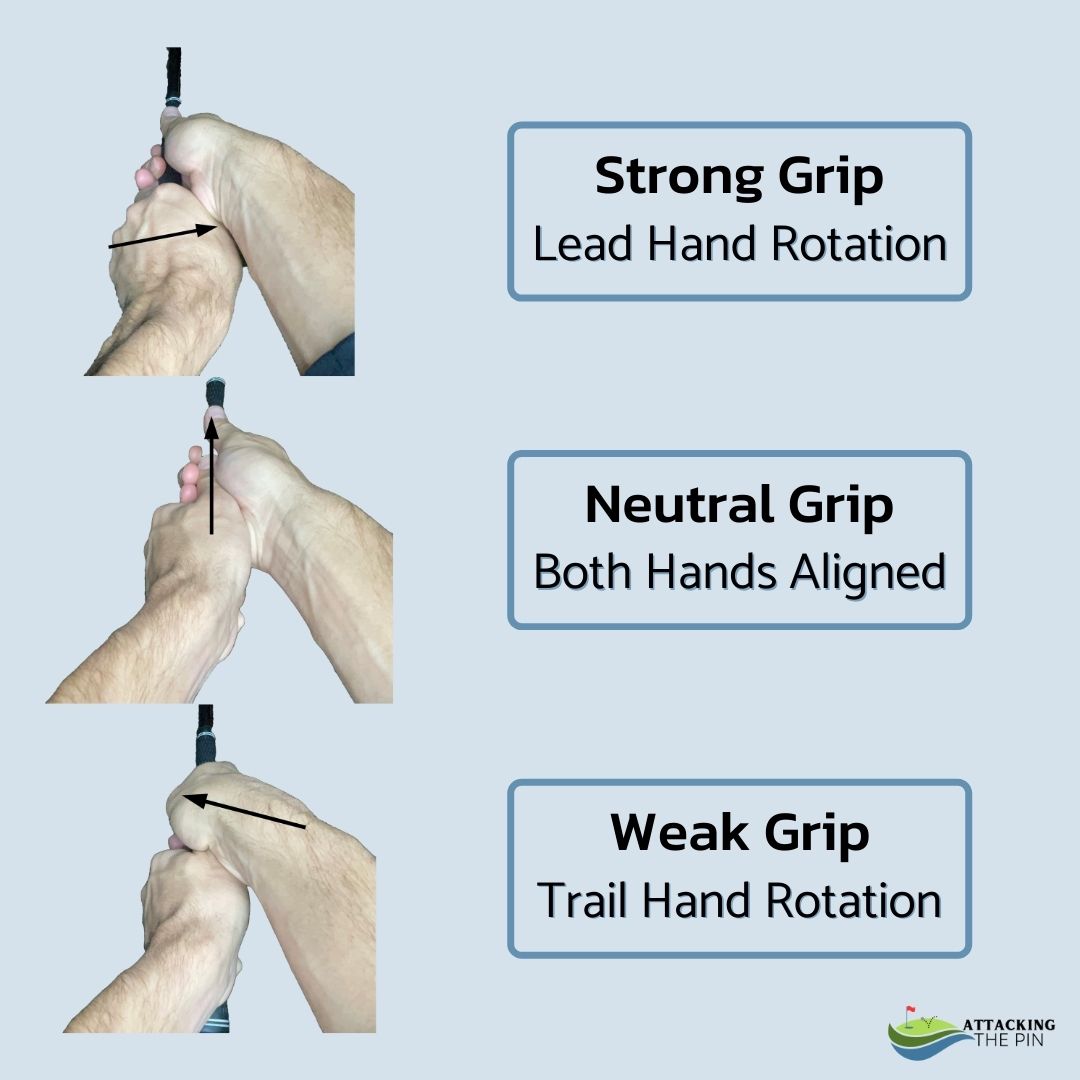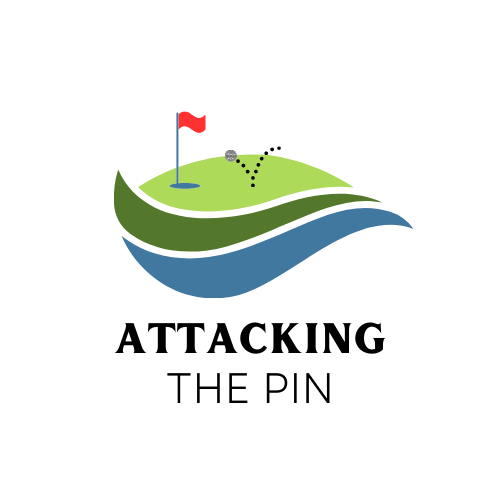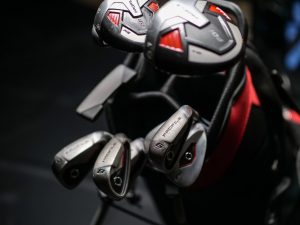So, how do you hold a golf club? The vast majority of pros use an overlapping (Vardon) grip but Tiger Woods and Jack Nicklaus use an interlocking grip. Which is the proper golf grip, the one used by most pros or the one used by the two greatest golfers of all time? The answer depends on the golfer.
As we explore the golf grip, let’s agree that there is not a single correct golf grip. The best golf grip for one player is not necessarily the best golf grip for another. However, we all face the realities of physics and biomechanics so it is also true that not all golf grips are created equal.
There is only one connection between you and your golf club – your grip. As a result, the question of how to hold a golf club is essential for all players, from beginners to tour pros and everyone in between. There are 3 main aspects of a golf grip that we will break down in this series:
- The relationship between your hands and the club’s alignment
- The relationship between your two hands
- The relationship between your hands and the handle itself
In part 1, I will go over the relationship between your hands and the club’s alignment. I will cover the overall basics of different golf grips, the pros and cons of each, and the effect a golf grip can have on your shot. Follow along throughout this 3 part series to uncover the best golf grip for your game.
How to tell a proper golf grip when you see it
How do you know someone is using a proper golf grip? Don’t look at their hands, look at their game. If they are consistently hitting their ball where they planned to, they are using a proper golf grip.
That doesn’t mean they could not play better with a different grip. A different golf grip may allow them to plan different shots. However, if a golf grip helps a player consistently hit the ball where they planned, they are using a correct golf grip for them.
Finding the best golf grip for you is a means to an end. Your grip should make it more likely that the ball will go where you want, not less likely. The best golf grip does not solve all the other issues that may impact shot results, but it should make it more likely, not less likely, that you are going to hit the shot you want.
The secret to golf in two words: distance and direction
As complicated as golf can seem, it really comes down to hitting the ball the right distance and in the right direction. The best golf grip for you is the one that allows you to hit as far as possible while making direction as predictable as possible.
I know what you’re thinking – “Thanks a lot, Captain Obvious.” But ask a lot of golfers why they hold the golf club the way they do and they’ll tell you it is comfortable or just feels right. Then, they’ll step up to the tee and slice the ball into the next fairway…and then do it again on the next hole and the next. For them, the test of a proper golf grip is whether they like the way it feels.
Golfer 1: “Does your grip allow you to hit the ball as far as possible while making direction as predictable as possible?”
Golfer 2: “Nope, but it sure does feel good!” [followed by massive shank]
Many golfers, intentionally or not, choose ‘feel’ over function. So, before we get into the details, let’s be clear – distance and direction are what matters most when it comes to a golf grip.
Learning the lingo
To get started, we need to all get on the same page on certain terms and how we are going to discuss the hands in relation to the club.
This discussion is all presented from the golfer’s point of view and how they see their hands and club when addressing a ball. Next, when we talk about positioning or moving the hands, the reference we will always be to that portion of the hands on top of the club grip, not the fingers curled underneath.
Now to some key terms. These are intentionally simple definitions recognizing there is a lot of nuance that is baked into many of the terms.

Neutral grip: Hands naturally pronated (turned inward).
Strong grip: Hands rotated away from the target.
Weak grip: Hands rotated toward target.
Overlap (Vardon) grip: Pinky finger of bottom hand overlaps forefinger of top hand. (Harry Vardon was an incredible golfer from the late 1800s/early 1900s and the developer of this grip.)
Interlock grip: Pinky finger of bottom hand and forefinger of top hand interlock.
Baseball (10-finger) grip: All ten fingers contact the club.
Target line: The intended initial direction for the golf ball.
Swing path: The path traveled by the clubhead.
Face angle: The angle of the clubface at impact in relation to either the target line or swing path.
Face angle matters – a lot
A study done by the engineers over at Ping indicated that between 61% to 83% (depending on the club) of initial launch angle is the direct result of the face angle of impact. Of course, spin resulting from your swing path can offset (or exacerbate) at least some impact of a misdirected face angle.
Notwithstanding, various websites report the final direction of the ball to be somewhere between 60% and 85% the product of face angle rather than swing path.
To be sure, this relationship between face angle and swing path allows really good golfers to shape shots almost magically. If that is you, thanks for reading this article, but probably it’s really not for you.
For the rest of us, we often lose sight of (or simply don’t know) what really impacts our golf shots. For most mid- to high-handicappers struggling with wayward shots, working to consistently square the clubface to the target line is the place to start. It is simple math. If 60% to 85% of the problem comes from one thing, try and fix that one thing.
We’ll talk more about how to do that below, but understanding the ‘why’ helps improve commitment to the ‘how.’
Putting it in neutral
If you’re just starting, have never given much thought to how to hold a golf club, or are just struggling, a neutral grip is a good jumping-off place.
To be clear, a neutral grip does not necessarily seem ‘natural’ for many players who view parallel palms as the natural alignment. If this is you, stand up and let your hands hang naturally at your sides. Look at your hands and you’ll notice your palms are not facing each other. Instead, both hands turn inward (pronate) toward your legs so your thumbs are basically pointing at each other.
The neutral golf grip is basically using these same hand angles to hold the club. The two-knuckle test is tried and true for a neutral grip. If you can see only your forefinger and middle finger base knuckles on both hands, both are likely close to neutral.
Now, if this is the first time trying a neutral grip, particularly if you haven’t paid much attention to your grip in the past, give it some time at the range. A big grip switch at the beginning of a round without any range time is a recipe for a club or two being thrown into a lake. Grip changes are hard and uncomfortable and should be approached thoughtfully and with practice.
You’re stronger than you think
So, you’ve been playing with a relatively neutral grip but find you continue to lose shots out to the right. Time to think about getting stronger. I don’t mean lifting weights (though feel free to give that a shot as well, never hurts). I mean strengthening your grip.
A strong grip is one where the hands are rotated away from the target line. This may mean three knuckles visible on your top (lead) hand and only one knuckle on your bottom (trailing) hand. The primary purpose of the strong grip is to close the clubface at impact.
More about this in a future article, but just remember your clubface angle pertains to both the target line and the swing path. Dave Tutelman wrote an interesting article back in 2006 that discusses the relationship. His guide provides a useful basis for evaluating and diagnosing ball flight.
So strong they’re weak
Watch many of the top players in the world and you’ll find many that look a bit more like bodybuilders than traditional golfers. Among this group, there are several who use notably weak grips on their top or lead. Take a look at Brooks Koepka, Bryson DeChambeau, and Jon Rahm and you’ll see some weak lead-hand grips from some really strong men. Definitely works for them.
Are you feeling strong? For stronger players, a weaker grip may ultimately be the ticket. However, a weaker grip is generally going to require a lot of practice time to create consistency. It certainly doesn’t hurt to have a lot of natural talent, a private coach, and nothing better to do than spend hours testing, refining and honing your grip and swing.
So what’s the verdict on a weak top-hand grip? Sure, it might prove the proper golf grip for you, but the smart money is to start with a neutral or strong grip and see where those take you.
Golf grip heresy?
When discussing the correct golf grip, there is a tendency to forget there are really two golf grips, not one, for any player using two hands.
Ask anyone if Tiger Woods and Rory McIlroy have strong, neutral, or weak grips, and most people that have any idea what you are talking about will answer that they have a strong grip.
In reality, the question is a trick question without a right answer. Tiger and Rory do indeed use a strong grip with their left (top/leading) hand. But what about their right (bottom/trailing) hand? For both of them, it is a relatively weak grip. That is, their hands are turned toward each other.
Similarly, many of those who use a weak grip for their lead hand pair it with a neutral or stronger grip for their trailing hand.
The blending of weak with strong grips by a single player feels almost heretical in light of the implied orthodoxy of many ‘how to’ articles and videos. These unintentionally suggest that you choose one grip alignment and use it for both hands. While this is a reasonable starting point, some experimentation by hand can help you find the best golf grip for you.
REMEMBER – As you work toward the proper golf grip for you, make sure performance trumps comfort. Better golf comes from doing more of what works knowing that it will start feeling right instead of doing more of what feels right and just hoping it will start working.
Grip alignment – the final verdict
Before we leave all this strong, weak, and neutral talk, it is good to go back to where we started. Remember, golf comes down to distance and direction. Of course, the best golf grip would be one that increases both your shot length and control.
As you work to find the best golf grip for you there are likely to be some tradeoffs. A grip that really allows you to hit the furthest may be a grip that also lands you in the next fairway more often than not. While other things impact that result, you should rethink your grip. If you are consistently hitting it right, try rotating your hands to the left. It may not entirely solve your problems but will provide some good feedback as you work toward a solution.
Similarly, if your grip all but guarantees that you’ll be in the middle of the fairway, but also that you’re only going to hit it 75 yards, you may be sacrificing too much distance for control. A grip that severely restricts wrist engagement can produce consistent direction but will really limit distance.
For mid-handicap to high-handicap players, working to find that balance is the key. This absolutely does not mean changing your grip every round. Instead, your best friend to help you find your best golf grip is the golf range.
Now that you understand the relationship between your hands and the club angle continue to part 2 in this series about the relationship between your two hands on the club.






